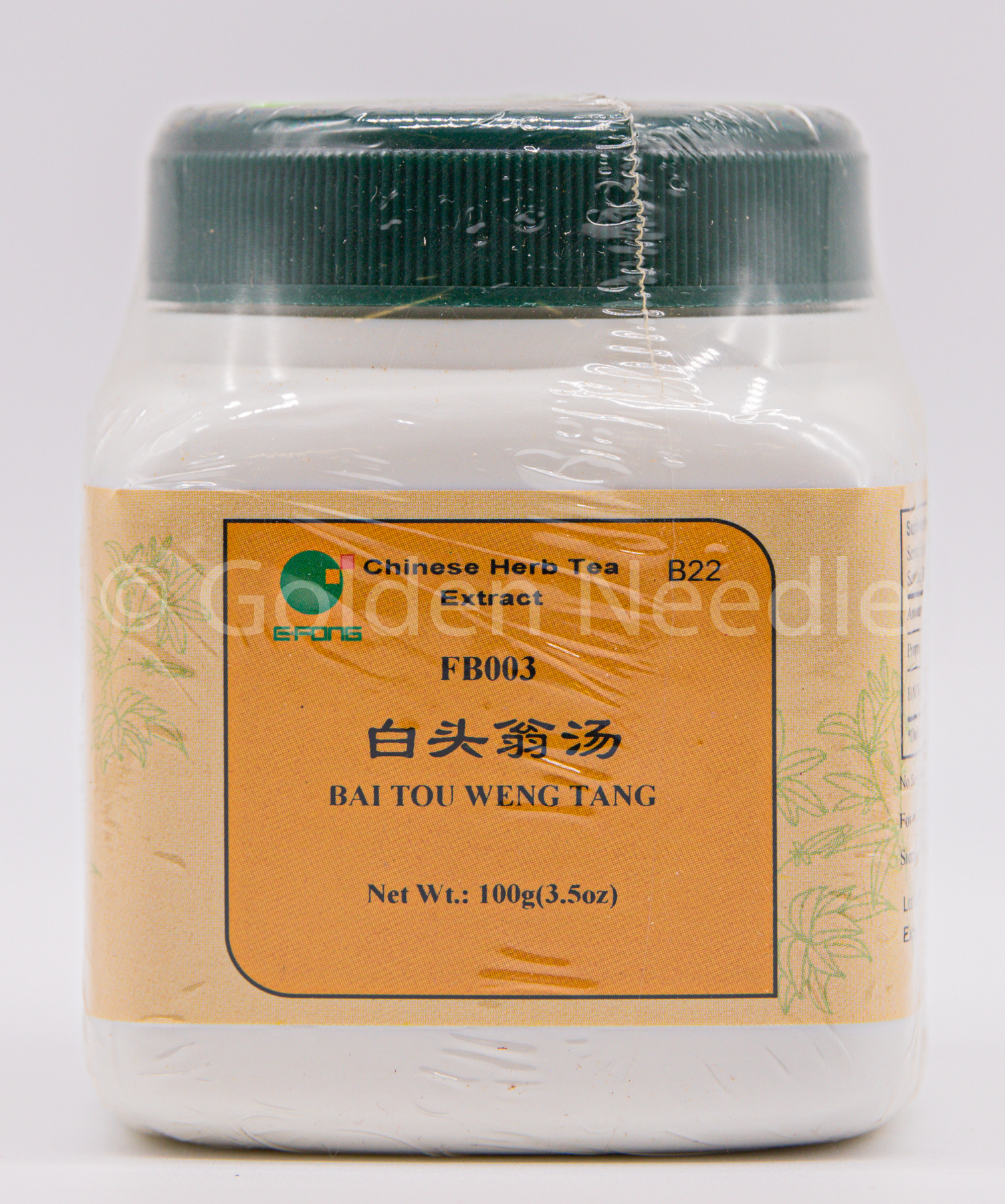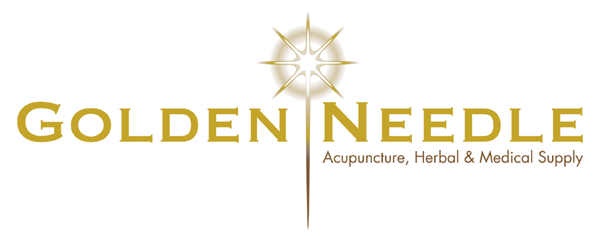Bai Tou Weng Tang Granules
Bai Tou Weng Tang Granules
| SKU |
EF107 |
| Brand |
E-Fong Granule Formulas |
| Unit Size |
100 gram bottle |
| Potency |
5:1 extract granules |
| Contraindications |
Because this formula contains herbs that are bitter and cold in nature, it can easily injure the Spleen yang. It should therefore not be used long-term, and is contraindicated in cases with Spleen yang deficiency. |
| Chinese Symptomology |
Signs & symptoms of stomach and intestinal damp heat with heat more prominent than dampness include:Abdominal pain ~Tenesmus ~A burning sensation around the anus ~Diarrhea containing more blood than pusThirst ~ |
| Western Symptomology |
Hot dysentery resulting in amebic and bacillary dysentery and other inflammatory bowel diseases, such as colitis. Other uses include conjunctivitis, pelvic inflammatory disease, gonorrheal urethritis, hemorrhoids, and hysterical tremors. |
| Actions |
Clears heat and resolves toxins, cools the blood and stops dysentery |
| Pattern |
Hot dysentery ~ stomach and intestinal damp heat with heat more prominent than dampness |
| Tongue |
red tongue with slimy, yellow fur |
| Pulse |
bowstring, rapid |
| Chinese name |
白é ç¿æ¹¯ |
| English name |
Pulsatilla Root Combination Granules |
| Description |
This formula is for hot dysenteric disorder due to heat toxin searing the Stomach and Intestines. This causes tenesmus, a burning sensation around the anus, blood and pus in the stools, a red tongue with a yellow coating, and a wiry, rapid pulse. The presence of damp-heat is reflected in the consistency of the stools and especially by the presence of pus. The source text recommends this formula for treating terminal yin-stage dysenteric disorders due to heat. This is regarded as a very serious condition in which the damp-heat or toxin penetrates to the blood level. The severity of the disorder requires the use of rather large doses of especially strong herbs. Both this formula and Peony Decoction (shao yao tang) are used to treat damp-heat dysenteric disorders. That formula has less heat-clearing and toxicity-relieving functions, but has ingredients that promote the movement of qi. It is therefore used for conditions with less heat and toxicity (less blood in the stool), but more qi stagnation (abdominal pain and tenesmus). The use of this formula has been expanded to the treatment of other conditions due to heat toxin or damp-heat in the lower burner. Many of the materia medica books of the Ming and Qing periods note that the chief herb, Radix Pulsatillae Chinensis (bai tou weng), is beneficial to the eyes. For this reason, some modern practitioners use the herb for acute eye disorders due to damp-heat. (From: Bensky - Chinese Herbal Medicine Formulas and Strategies.)* |
| Ingredients |
Bai Tou Weng, Huang Lian, Qin Pi |
There are no reviews, yet! If you've tried this item, share your experience.
Only registered customers can review items. Please sign in to review!
Please register/login first.


